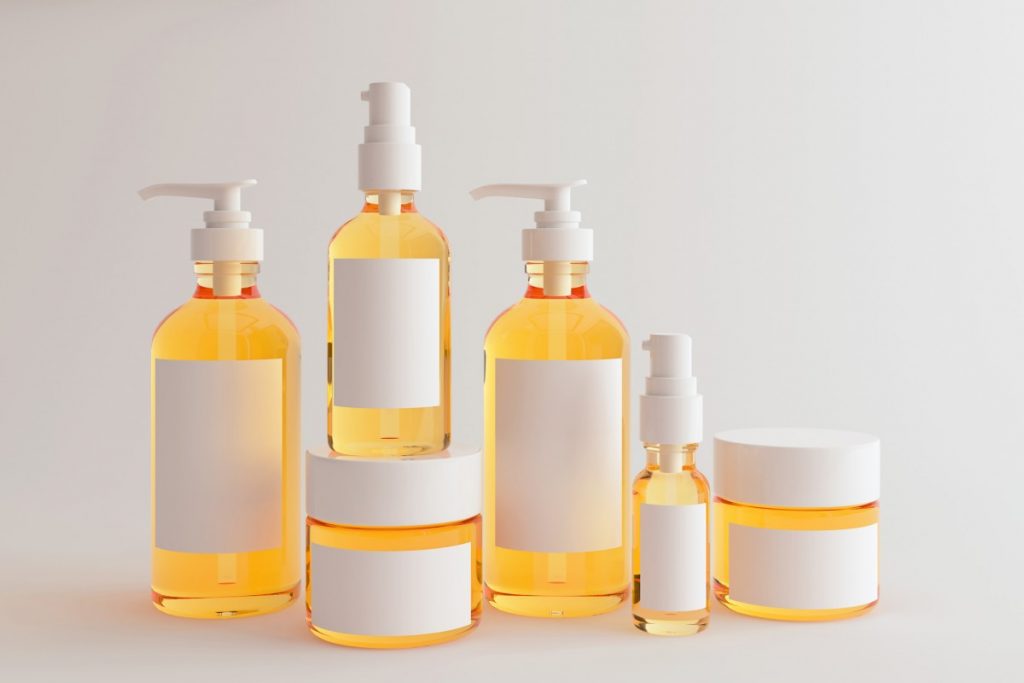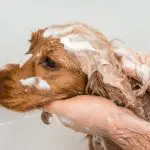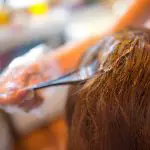
Properly looking after your hair might require several products, conditioners, and creams.
If you love to shop for the best products on the market, it is normal that you will end up with many half-empty conditioner bottles that don’t have enough products for full hair treatment in them. So, you might be tempted to mix them all and finally look after your hair.
Generally, you can mix conditioners. However, it is important only to mix products that you have already tested on your hair, and they have a similar composition. Manufacturers test each formula, so mixing them can cause a chemical imbalance and lead to skin and hair damage.
Find out how to safely mix conditioners below – and don’t miss out on the dos and don’ts of this practice.
Table of Contents
Can You Mix Conditioners?
Since it is common to have little conditioner in each bottle, we have all been tempted, at least once, to mix them and get our hair to shine.
However, it is important to keep in mind that each conditioner has a unique chemical or natural formula that has been repeatedly tested for human usage by the manufacturer. Therefore, mixing them can lead to a chemical imbalance or reaction.
If this happens, you can experience adverse effects on your hair and skin.
As you know, hair conditioners are the second product applied to your hair after the shampoo and can make your strands look shiny, healthy, and silky.
Unlike shampoo, the hair conditioner is not designed to clean the hair and remove dirt and sweat. Instead, it protects and softens the strands.
Conditioners can do so thanks to the main ingredient included in them, cationic surfactants. The main responsibility of this compound is to hold some dead skin cells together at the cuticle layer. These cells are what envelopes your hair and make it look so soft and shiny!
In two-in-one shampoos, these surfactants are triggered by the water when you wash the shampoo off your hair. Some conditioners also include silicone, which is attracted by such surfactants to add another layer to the hair.
Natural Conditioners vs. Chemical-Based Conditioners
Before mixing two or more conditioners, it is essential to check whether these are natural or chemical-based.
The first ones are free of artificial chemicals, and they are generally safer to mix. Indeed, while you might not experience the fantastic results you had envisioned, there is no high risk of adverse reactions.
Instead, when it comes down to mixing chemical-based conditioners, there is a chance of experiencing side effects on your hair and skin. Chemical-based conditioners might sometimes include silicone.
Silicone is a plastic-related component that can bind the hair and cuticle flakes together, making your hair look even silkier.
However, this ingredient can be incredibly harmful to your hair and the environment. In doubt, it is recommendable to avoid mixing silicone-based conditioners.
Do’s & Don’ts of Mixing Conditioners
Below, you will find all the tips to mix conditioners safely. However, if you are in a rush, make sure you read these dos and don’ts!
Do’s of Mixing Conditioners
- Read the conditioners’ labels and ensure that they don’t include harsh chemicals.
- Avoid buying conditioners that include silicone.
- Apply one conditioner, rinse, then apply the second product
- Stick to natural products if possible
- Use mixed conditioners only as a last resort – avoid long-term usage!
Don’ts of Mixing Conditioners
- Don’t mix it beforehand, but opt to blend the two products just before applying them to your hair.
- Don’t mix harsh chemicals. So, if your conditioner includes silicone, avoid this step altogether!
- Don’t mix a conditioner with a two-in-one shampoo, as the chemical formulation can be more delicate and easier to throw off balance.
- Don’t mix many different conditioners. Stick to two and make sure that they are built for the same hair type.
Reducing the Risk of Hair Damage When Mixing Conditioners
Mixing conditioners – even if not containing silicone – can cause damage to your hair and skin. Therefore, if you attempt this process, it is always worth considering the risks involved.
However, if you have decided to try it anyway, some tips can help you safely. Check them out below!
Use Products You Have Already Tested
It is always recommendable to avoid mixing products that you have not already tested on your scalp or hair.
Indeed, if you are into your hair’s look and feel, you know how many products it is necessary to go through before finding the right one!
Moreover, if you have already tested each product singularly, and you have made sure that they don’t include harsh chemicals, there are fewer chances that mixing them will cause damages.
Mix Them Just Before Use
Mixing two or more conditioners just before applying the blend to your hair can limit the chance of damages and adverse chemical reactions.
Instead, if you have mixed them and left them in the container for several days, this can cause the chemicals to bond and create reactions that might harm your hair.
Even if your hair does not suffer from it, a mic between the two different conditioners might not be that efficient.
Apply the Two Types Separately
Instead of creating a blend of the two conditioners, you might consider applying one at a time. This technique can help you manage the effects of the two products better.
Moreover, rinsing your hair after the first application will weaken the product’s strength, and you can apply the second one more safely.
Alternatively, you might try to apply one of the products on half of your hair and the other on the other half. While it might require you to divide your hair into two in the shower, this method can significantly reduce the chances of adverse reactions.
Of course, in this case, it is recommendable to have tested the effects of the two conditioners prior to using. Moreover, if they are quite similar, you won’t be able to see the difference!
Do Not Use as a Long-Term Treatment
Mixing conditioners might be an efficient last resort. However, this blend should not be used as long-term hair treatment. Indeed, while you might not see the side effects after using it for the first time, regular use of this blend might cause irritation or hair damage.
Use Leftover Conditioner as Shaving Cream or Pedicure Purposes
If you don’t feel confident about mixing two different conditioners, you might opt to use the leftovers for other uses. These include:
- Using the leftover conditioner as a shaving cream just before the razor.
- Due to conditioners’ softening properties, it can safely be used as a moisturizer for your feet’ skin before a pedicure. For this, you might need to mix it with some lukewarm water.
- Some users have also attempted to use conditioner as a makeup removal due to the ingredients’ similarities with some beauty lotions.
- It can be used as a polisher for stainless steel appliances.
- You can mix it with water and use it as a post-wash treatment for delicate clothing items.
Leftover hair conditioners can find many different uses, and you won’t need to mix it with other leftovers to make the most of it!
However, if you are tempted to use it on your hair still because you have run out of hair treatments, you should know that there are other options to make your hair silky once again.
For example, you can create your home-made conditioner from simple ingredients that you are likely to already have in your pantry. You can learn more about it in the video below:
Conclusion
Mixing different types of conditioners – if not done properly – can result in long- and short-term damages to hair and scalp. If in doubt, it is recommendable to buy a new bottle or create your own with some natural ingredients you have in the pantry.
If you would like to try mixing them anyway, you should make sure that they are silicone-free and created for the same hair type. Finding similar formulas can help you limit the chances of hair damage.
But be careful – you should only use these blends as a last resort and not as a long-term treatment.



